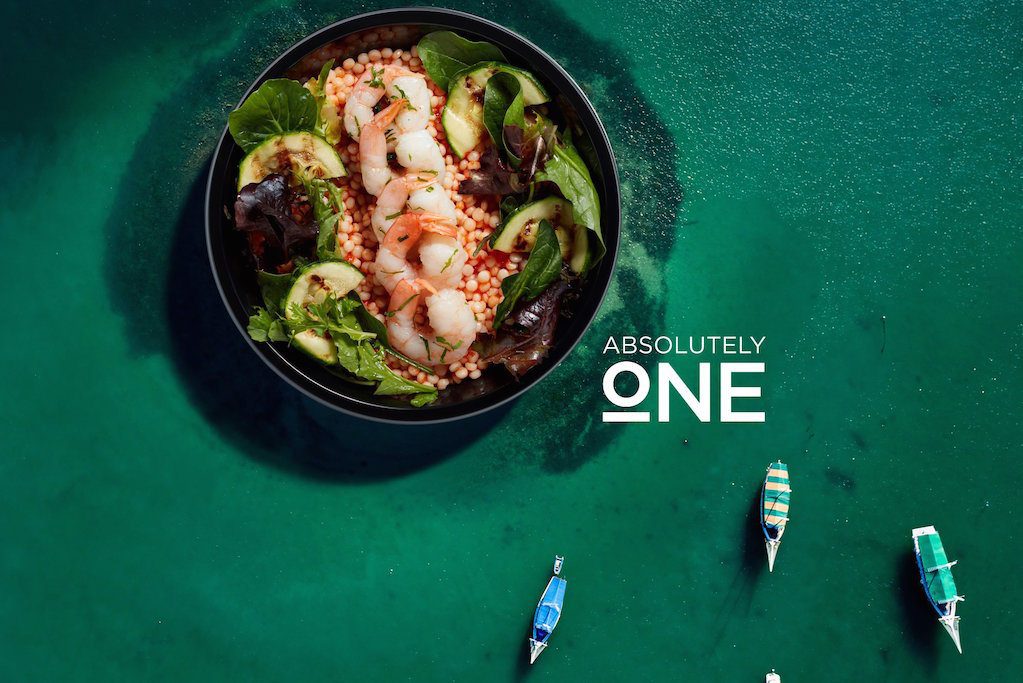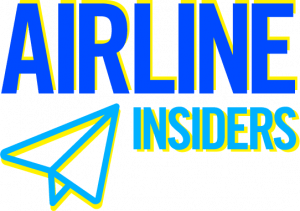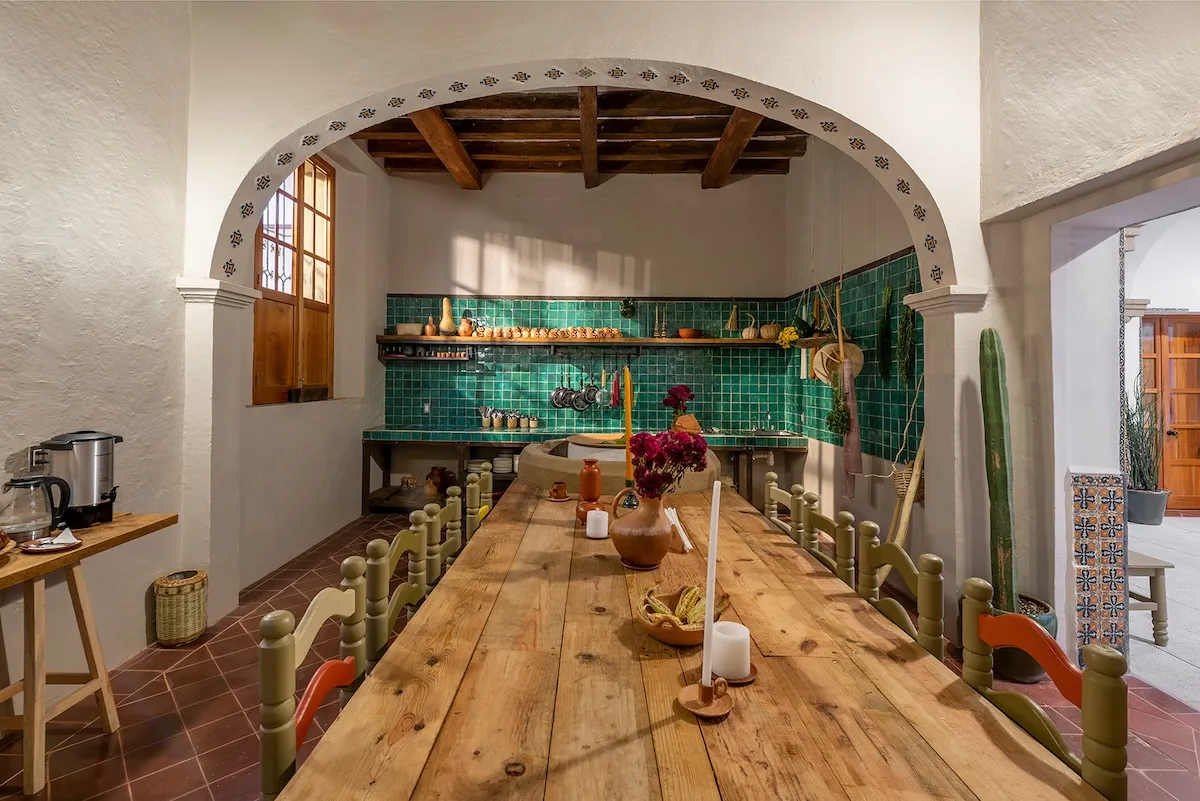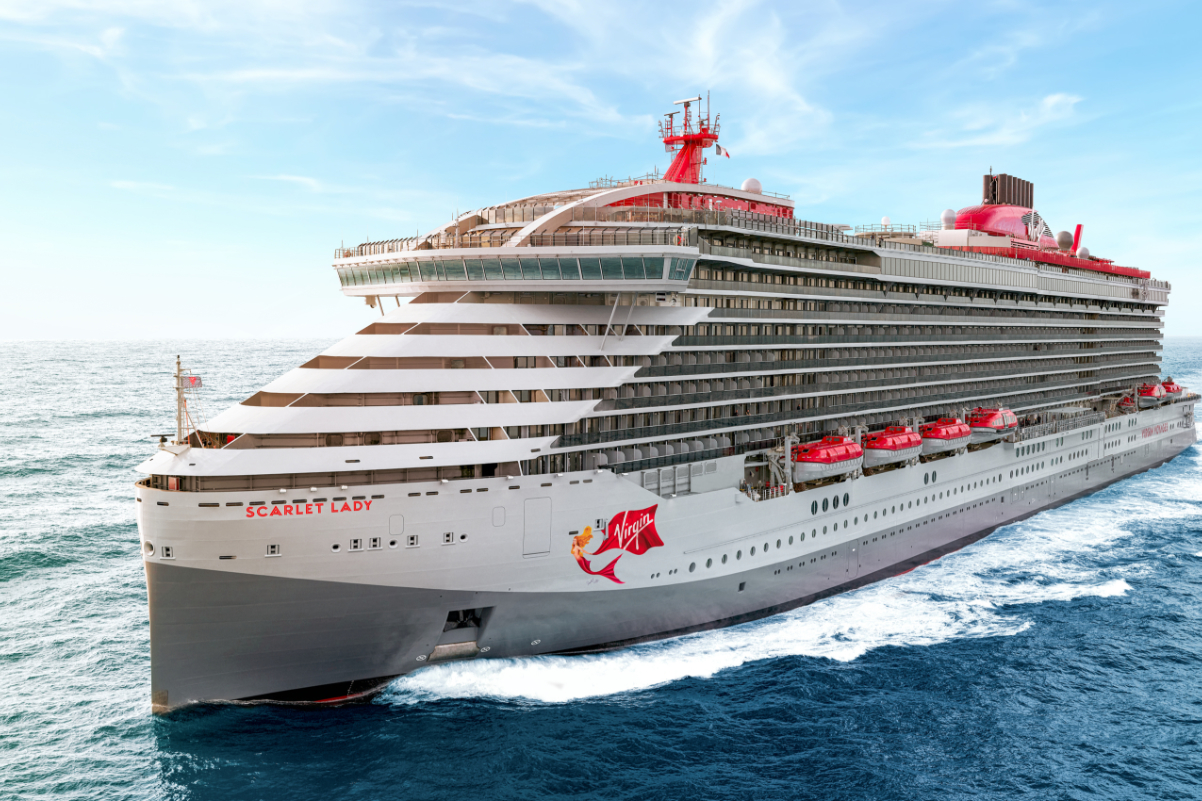Airline Food Conundrum – Paid Meals Winning Out Over Freebies

Skift Take
 Editor's note: This series, called Airline Insiders, introduces readers to behind-the-scenes decision-makers for airlines. Unlike our ongoing airline CEO series, Future of the Passenger Experience, we will not question the highest-ranking executives here. Instead, we will speak with insiders who guide decisions on airline operations, networks, marketing, and the passenger experience.
Editor's note: This series, called Airline Insiders, introduces readers to behind-the-scenes decision-makers for airlines. Unlike our ongoing airline CEO series, Future of the Passenger Experience, we will not question the highest-ranking executives here. Instead, we will speak with insiders who guide decisions on airline operations, networks, marketing, and the passenger experience.
Today, in the third installment of the series, we speak to an executive with Gate Group, the world's largest airline caterer and retailer.
You can read all the stories in the series here.
Travelers love to complain about airline food. On the long-haul flights where it's still served for free, many complain it's too salty, or fatty, or that it tastes like it just left the freezer. And while economy class passengers may gripe most, many business class customers share similar concerns.
Anne De Hauw wants to change that. She's vice president for innovation at Gate Group, the world's largest airline caterer, and she may know more about airline food than anyone on the planet.
Her job is tricky. Airlines want better quality food — despite what the average passenger may think, customer satisfaction is important to them — but often they don't want to pay a penny more than necessary for catering.
De Hauw and her team must be crafty, suggesting solutions that won't increase an airline's costs. Increasingly, that means asking passengers to pay for food, either for the entire meal, or special add-ons, like an after-dinner ice cream.
Charging for what was once free may not seem like a passenger-friendly move, but De Hauw said Gate Group's research shows millennials — a market segment airlines now want to attract — don't mind it. Many fly Norwegian Air on transatlantic flights and happily pay for food and drinks.
"They would rather pay for good than get free food which isn't good," De Hauw said.
Skift recently spoke to De Hauw about new trends in catering. We also asked her about issues that have long vexed passengers, such as why airline coffee rarely tastes right and why flight attendants often have so much trouble explaining the wine list.
Note: This interview has been edited for length and clarity.
Skift: What's Gate Group?
Anne De Hauw: Gate Group is the largest airline caterer and retailer, and it's owned by HNA, a Fortune 500 global corporation, based in China. They are experts in the aviation sector, in tourism, infrastructure, real estate and some other areas.
Skift: How many airlines does Gate Group work with?
De Hauw: We work with over 300 airlines. We serve most of the full-service airlines somehow. Some could be only the catering. Some could be the equipment. Some could be warehousing or last-mile provisions. Some could be retail. Some could be all of this.
Skift: People love to say they hate airline food. Does that bother you?
De Hauw: No. It doesn't bother me. Actually, I agree most of the time. That's precisely why I like my job, because I can hopefully help turn that perception around and improve the food experience. The perception is still there, and there is still a lot of room for improvement.
The other thing that is important is that people have no idea of the complexity behind airline meals — the safety standards, the supply chain, the number of meals we have to prepare for each flight. We have crew meals, gluten free, kosher, you name it. People don't really have an understanding of the journey each of those meals takes before they end up in front of the passenger.
Skift: How do you fix this perception?
De Hauw: We put in place an innovation center at Gate Group three years ago. Our innovation process starts with doing research — focus groups with passengers and crew. We figure out what passengers expect and that's the starting point of our development process. We then make a business case to look at commercial viability.
Skift: People often complain airlines don't carry enough fresh food, either for sale or for free. But I've heard that on the plane, people always go for comfort food — regardless of what they said in the focus group. True?
De Hauw: Yes. We have done research and actually people, unconsciously, look to comfort themselves because there's that sentiment of fear and uncertainty. And they're also not that comfortable on the flight, because they're sitting in a seat with everybody on top of each other. There's not much to do and you're up in the air with limited space and entertainment.
People are looking to pass time, and food is one way to do that. We usually allow more guilty pleasures in the air than on the ground.
Skift: Does that mean if an airline boards salads, no one buys them?
De Hauw: Yes, actually it does. We have one very recent example from a customer, who had in their menu, a fruit salad. They loaded one fruit salad per flight, and the one fruit salad was never, or rarely, sold. It's there and people like to see it. They like to see a healthy option but they're not buying it.
Skift: Let's say you're a premium airline, and you're feeding your business class passengers on a long-haul flights. What are you spending per customer?
De Hauw: It's not a lot compared to the price of a business class ticket. Depending on the airline, and the number of stars they have with [the ranking agency] Skytrax, it's about $25 for food and equipment — the china, the cutlery, the glass, the napkin, the pepper and the salt, the tray.
Skift: And in economy class?
De Hauw: It's a bit less. It depends on the airline, but I would say on average about $8, also [including] food and equipment. If you calculate the number of passengers flying per airline, times the cost of the food, every penny [airlines] can reduce is significant, [and falls to the] bottom line at the end of the year. Caterers are under a lot of pressure in terms of food costs when it's complimentary.
Skift: We're starting to see some long-haul carriers — generally low-cost airlines — charge for food on transoceanic flights. Do you see this trend growing?
De Hauw: I don't think it will happen overnight but I think over time there will probably be an evolution. Millennials want to have great food. It can be simple, but it needs to be good. They would rather pay for good than get free food which isn't good.
Skift: Some airlines with free food now let coach passengers buy up to a business class meal. Do customers do it? Or do they prefer free?
De Hauw: I think the quality of the complimentary meal has a big impact. If it's OK, people will probably not spend more for an upgraded meal. However if the upgraded meal really is a very attractive meal — maybe branded with a chef's name — yes, it would have a big impact. Also, when there's a preorder, so people can reserve their meal before they fly, they will do it. The trend is definitely going in that direction. In the future, we think airlines will lean more to retail and preorder.
Skift: A couple of years ago, I asked Frontier Airlines CEO Barry Biffle why his airline doesn't serve free soda, since most consumers believe bulk-bought Coke is cheap. But he suggested each soda for an airline costs more than at Costco. Do you know what it costs to get one Coke to an airplane?
De Hauw: The Coke example is dependent on the airline, and how much Coke they need. But the higher cost is because of the supply chain and the operation behind it. The cans need to be sorted in the catering unit at the airport. They need to be sorted into trolleys. It is all planned in advance how much Coke goes into each trolley. The catering then needs to be driven by the high-loaders of the caterer at the airport and loaded on the airplane. That area is a highly-secure area. And the price of a high-loader is around $200,000. Of one high-loader. That's the truck that rises to access the aircraft.
The whole process of boarding all these elements has a big impact on the cost. That's why it is more expensive on board.
Skift: You told me recently in New York that airline food is some of the safest in the world. But last month listeria was found on some surfaces at your Los Angeles facility, and a few airlines suspended some food service. What happened?
De Hauw: There was listeria found on the drains and on the ground in one of our units. We immediately took action to make sure that the bacteria was removed.
We are reconstructing our hot kitchen in LAX but are working with a mobile hot kitchen temporarily in some cases, and are catering out of Las Vegas in other cases.
If something goes wrong, we are of course giving our full attention to solving the problem. Safety is all regulated. There are very severe standards and safety regulations. We need to comply. We have a compliance team that is constantly visiting our units and checking the quality to make sure that we remain complaint.
Skift: You still believe airline food is among the safest in the world?
De Hauw: Yes. One reason for that is the shelf life of the food needs to be quite long because of the whole supply chain. It takes on average about 24 hours between the food production and the moment that the passenger eats the food. An airline cannot have their passengers become sick from their meals. It's a very safe food experience, that's for sure.
Skift: ANA's CEO told me recently his airline won't serve sushi because it's hard to make it taste right at 35,000 feet. What is else is tough?
De Hauw: Any food which is sensitive to having bacteria. Raw fish is very sensitive. It needs to be extremely fresh to be good. And the supply chain for airline catering is not tailored for very fresh foods.
Ice cream is also harder because ice cream that is supplied but not consumed is wasted. Everything that is milk-based is difficult, too, [for temperature-related reasons.] We are working at solutions to overcome that problem. One of them is a chilled trolley. It's a trolley with a fridge inside, to ensure the temperature inside the trolley remains stable and anything that is not consumed during the flight does not necessarily need to be wasted, but can get re-offered or resold.
Coffee on board is difficult too.
Skift: I've heard the problem with coffee is the water on the planes. Is that accurate?
De Hauw: Oh, it's much more complicated. For brewed coffee, you need to have a coffee machine in the air, and the battery needs to be FAA approved. There is of course the pressure element to it, and there is the overall risk of things going wrong in the air. Having a coffee trolley is something we are developing but it takes a long time because it needs to be approved. I think we'll get there.
Skift: Last year, KLM tested a rolling beer keg on board. Could other airlines follow?
De Hauw: It was more like a promotional stunt because, as I just mentioned, every item that goes on board needs to be approved [for safety]. And that particular trolley was not approved [by regulators.] But it was tested by KLM and KLM took the risk and the responsibility of putting it into the air anyway. Other airlines are not likely to do that. But yes, it is something we are working on. But if you think of the limited space on board and the space that one trolley filled with beer takes, it may not be the most commercially efficient solution, let's say.
[Editors note: A representative for Heineken disputed this account, saying "We hereby want to confirm and clarify that the beer trolleys used on board of KLM flights have full certification and registration."
Skift: You recently introduced a new food service for LATAM long-haul flights that's a hybrid free/pay menu. How does it work?
De Hauw: For LATAM, we started to work about two years ago on a transformational economy class solution, where the food experience is much improved. Instead of having a traditional tray with the dessert, the salad, and the bread and the butter, the coffee cup and the whole thing at the same time in front of the passenger, we put all the value where it matters. That means in one dish that's a good dish. We started onboard tests in December 2016.
Skift: Does anything at all come with the main dish?
De Hauw: Today, the passenger receives a piece of bread with the meal. The piece of bread is focaccia. It’s a superior quality piece of bread if you will.
And after that, in a second service, they get a dessert snack. It's a route-specific chocolate-based item. It's a not a full dessert, and it still leaves room to buy an ice cream.
Skift: What if I want salad?
De Hauw: You don't get a salad, but we are working on ancillary revenue proposals for LATAM where you will be able to upgrade your meal. You will be able to buy salads, buy starters, buy an ice cream, and buy champagne on top of that main dish.
Skift: What do customers think?
De Hauw: We have done surveys on board LATAM to make sure the passengers are satisfied, and the average net promoter scores doubled. And LATAM was also able to save in trolley space. For LATAM this has been a financially good solution. Space, weight, and crew are the savings generated by [the program].
Skift: What else are you working on in the innovation center?
De Hauw: We are working with several airlines on preorder, [so passengers can choose what they want before departure]. We are also improving our retail offering. We are working on on-demand [dining] as well. It is an initiative for the front cabin where the passengers not only chose what they eat, but also when they eat.
Skift: When I fly in business class, I hate when airlines tell me when I must eat. Why haven't more airlines adopted dine-on-demand?
De Hauw: It's an added complexity for the crew and the crew is of course very much dictated by unions. Every handling for the crew is [set by policy]. And crew also has the right to take a certain amount of time of rest on board. If you introduce dine-on-demand and everyone asks at a different moment when to eat, then the flow of the crew is disturbed. That is what makes it challenging.
Skift: Often, flight attendants know little about the food on board. I know you want to fix this this problem. How?
De Hauw: We are developing a digital platform designed by the crew and for the crew so that together they can share experiences and learn from each other. We are trying to design platforms where the crew becomes the ambassador of the airline so they are more informed of the quality of the food, the personality of the food, the origin of the food, how it is prepared. They get trained in the wines better, so they are much more involved in the whole learning curve and become a better host onboard.
Skift: Does that mean flight attendants will stop asking customers whether they want red or white wine, and start being more specific?
De Hauw: Exactly. They should be able to tell you where the wine is coming from, what year it's from, or whether it's a dry wine or this or that. They should be better trained in what they are serving. From all the research we have done recently, it's very clear that the crew makes or breaks the customer experience. If the crew is not friendly or not hospitable, then the [net promoter score] is already bad. The first thing that airlines need to do is make sure that they have great crew. That's the first thing — before the food.




